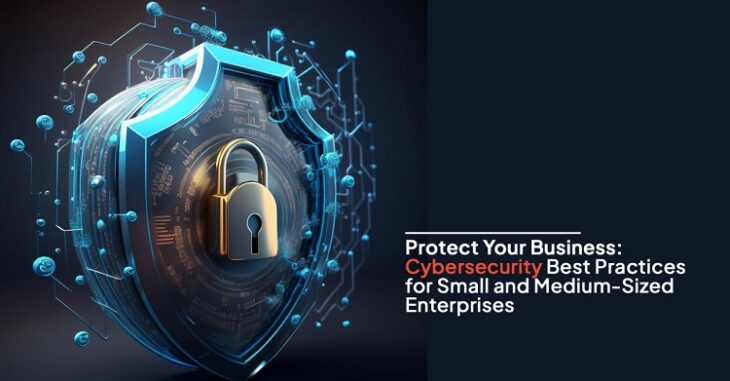
Small and medium-sized businesses (SMEs) confront cybersecurity threats that might have disastrous repercussions in an increasingly connected and digital world. Protecting your digital assets and consumer information is essential to the success and reputation of your business. This blog article will go through the fundamental cybersecurity best practices that SMEs may use to reduce risks and fortify their defenses against online threats.
Strong Password Policies: Implement strong password policies throughout your company. Employers should be required to use lengthy passwords that incorporate capital and lowercase letters, digits, and special characters. Encourage password reuse across several accounts and encourage using password managers to securely store and manage passwords. Passwords should be updated frequently, and you may want to use multi-factor authentication (MFA) as an additional security measure.
Employee Education and Awareness: A knowledgeable and watchful workforce is the first step in ensuring cyber security. Inform staff members of typical online dangers like phishing, social engineering, and malware. Conduct regular training sessions to promote safe online conduct, password hygiene, and the significance of reporting suspicious activity. Encourage workers to be careful when clicking on links or opening email attachments, especially from unknown or suspicious sources.
Regular Software Updates and Patching: Keep your operating systems, programs, and software up to date by installing patches and updates as soon as they are available. In order to gain unauthorized access, cybercriminals frequently use flaws in obsolete software. When possible, enable automatic updates; alternatively, set up a routine to check for and install updates on all of the devices connected to your network.
Secure Network Configuration: Check that your network is set up securely to reduce vulnerabilities. Change the usual usernames and passwords on routers and other network devices. Implement robust encryption protocols (e.g., WPA2 or WPA3) for your Wi-Fi network and avoid using network names (SSIDs) that are readily guessed. Review and update your firewall settings frequently to manage incoming and outgoing network traffic.
Data backup and recovery: Continually back up your important company data to a safe offsite location or cloud storage. In the case of a ransomware attack or data loss, maintaining recent backups means that you can quickly restore your data and resume operations. It is important to regularly test the backup and recovery procedure to ensure its dependability and efficiency.
Secure Remote Work Practices: As remote work becomes more prevalent, set up secure procedures for remote workers. Encourage the usage of virtual private networks (VPNs) to encrypt data transmission and offer a secure connection to your network. Using the principle of least privilege (PoLP), set up access controls and user rights so that workers are limited to using the resources they need to do their jobs.
Regular Security Assessments and Audits: Conduct routine security assessments and audits to find holes and flaws in your systems and networks. Conduct penetration testing and vulnerability scanning to analyze your infrastructure’s resilience to cyber threats. Think about hiring outside cybersecurity professionals to do thorough analyses and provide advice based on the unique requirements of your firm.
Incident Response Plan: Create an incident response plan outlining the measures to be taken in the case of a cybersecurity issue. Establish communication channels, assign roles and duties to staff, and specify an explicit escalation procedure. Maintaining the incident response plan’s effectiveness when a genuine issue occurs requires regular testing and updating.
Vendor and Third-Party Risk Management: Check to see if your company’s suppliers and service providers have strong cybersecurity protocols in place if you depend on them for anything. Examine their security procedures, legal commitments, and data processing guidelines. Review and update vendor contracts on a regular basis to include cybersecurity provisions, and keep an eye on compliance.
Cyber Insurance: Consider purchasing cyber insurance to mitigate the financial risks associated with cyber attacks. Data breaches, company interruption, legal fees, and customer notifications can all be covered by cyber insurance. Examine various insurance choices and choose a plan that fits your company’s requirements and potential dangers.
Best Practices for Small and Medium-sized Enterprises can enhance their security and focus on their core business operations with confidence.